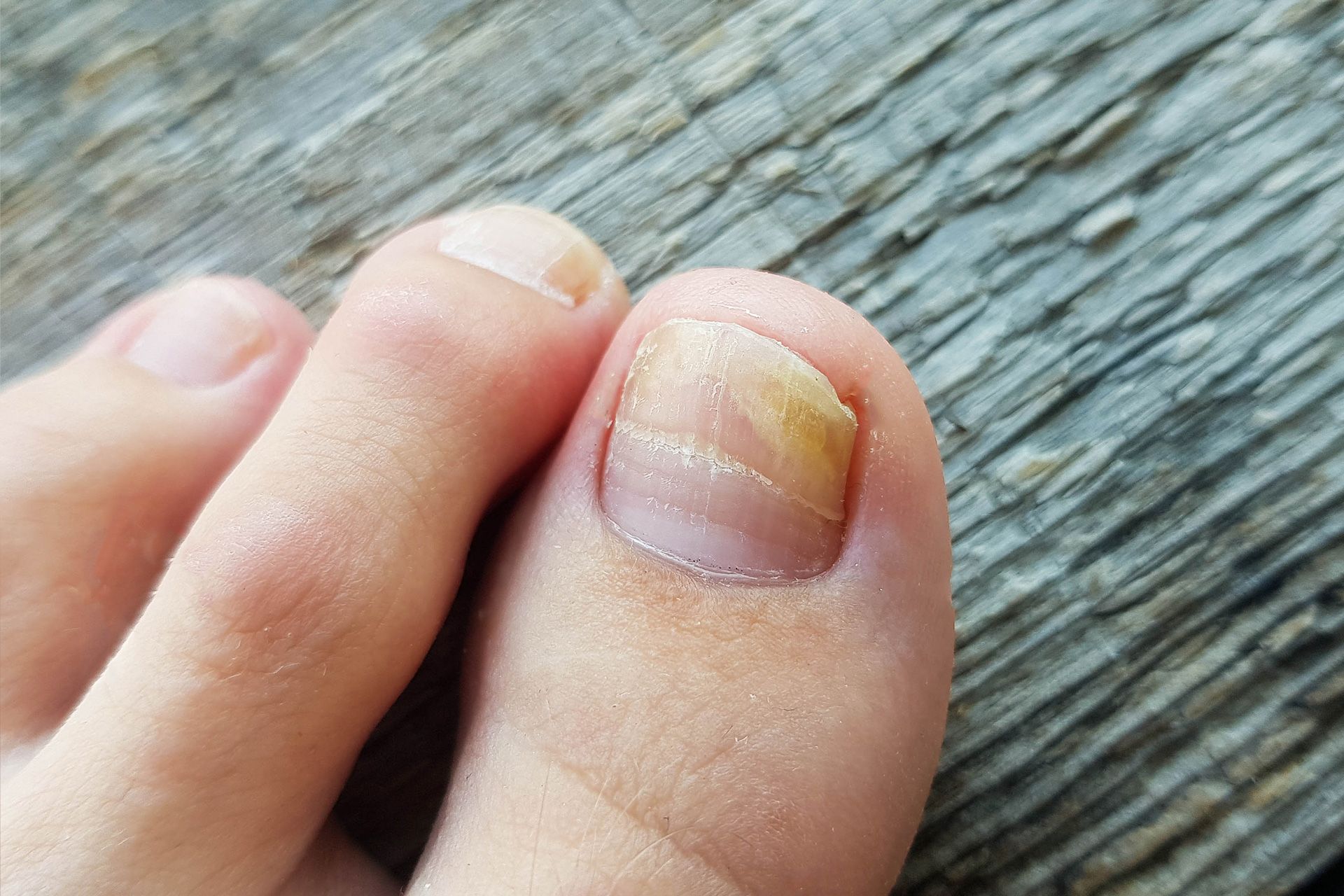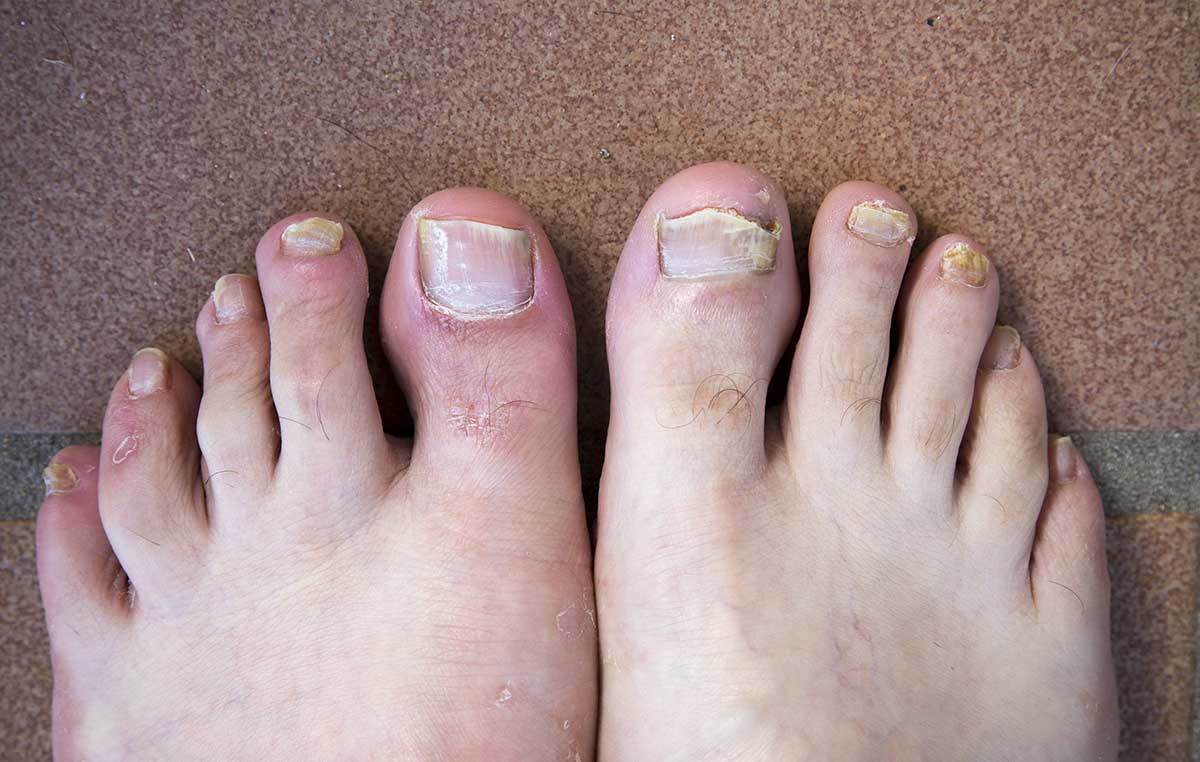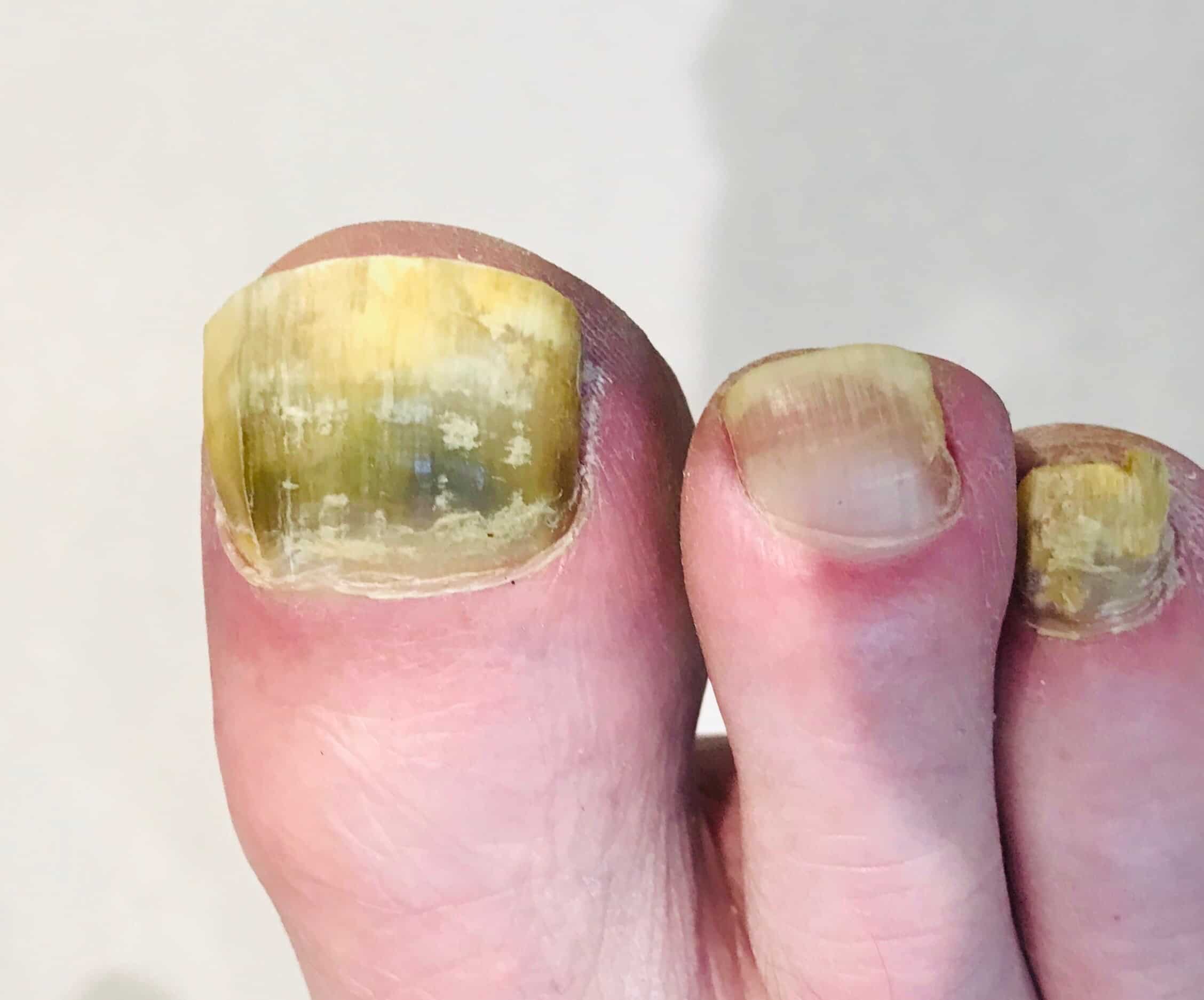What Is Nail Fungus?

Nail fungus, also known as onychomycosis, is a common fungal infection that affects the nails. It occurs when fungi, such as dermatophytes or yeasts, invade the nails, causing them to become thick, discolored, and brittle. Nail fungus can affect both fingernails and toenails, but it is more common in toenails. The infection can be caused by various factors, including poor hygiene, moist environments, and compromised immune system. It is important to treat nail fungus promptly to prevent its spread and alleviate symptoms. Effective treatment options include antifungal medications, topical solutions, and laser therapy.
Overview Of Nail Fungus And Its Causes
Nail fungus, also known as onychomycosis, is a common fungal infection that affects the nails. It is caused by the invasion of fungi, such as dermatophytes or yeasts, into the nails. Poor hygiene, moist environments, and a compromised immune system can increase the risk of nail fungus. The infection can cause the nails to become thick, discolored, and brittle. Prompt treatment is essential to prevent the spread of nail fungus. Effective treatment options include antifungal medications, topical solutions, and laser therapy. Maintaining good nail hygiene and avoiding prolonged exposure to moist environments can help prevent nail fungus.
Identifying The Symptoms Of Nail Fungus
The symptoms of nail fungus can vary, but common signs include thickened, brittle, or crumbly nails, yellow or brown discoloration, distorted shape, and a foul odor. Infected nails may also become separated from the nail bed, causing pain and discomfort. It is important to note that these symptoms can also be caused by other conditions, so it is essential to consult a healthcare professional for an accurate diagnosis. They may perform a physical examination, take a nail sample for laboratory testing, or order imaging tests to determine the presence of nail fungus. Early detection and treatment can help prevent the spread of the infection and promote faster healing.
How Does Nail Fungus Spread?

Nail fungus can spread through various mechanisms, including direct contact with infected surfaces or objects. It can also spread from one nail to another on the same person, as well as from the foot to the nail and vice versa. Fungal spores can survive in warm and moist environments, making public areas such as locker rooms, swimming pools, and communal showers potential sources of infection. Sharing personal items like nail clippers and pedicure tools can also contribute to the spread of nail fungus. Proper hygiene practices, such as keeping feet clean and dry, wearing breathable footwear, and avoiding sharing personal items, can help prevent the spread of nail fungus.
Understanding The Mechanisms Of Nail Fungus Spread
Nail fungus can spread through various mechanisms. One way is through direct contact with infected surfaces or objects. Fungal spores can survive in warm and moist environments, making public areas like locker rooms and communal showers potential sources of infection. Additionally, nail fungus can spread from one nail to another on the same person, as well as from the foot to the nail and vice versa. Sharing personal items such as nail clippers and pedicure tools can also contribute to the spread of nail fungus. Proper hygiene practices and avoiding sharing personal items can help prevent the spread of nail fungus.
Common Sources Of Nail Fungus Infection
Nail fungus infections can be acquired from various sources. Common sources of nail fungus infection include:
- Direct contact with infected surfaces: Fungal spores can survive in warm and moist environments, making public areas like locker rooms, communal showers, and swimming pools potential sources of infection.
- Sharing personal items: Sharing items such as nail clippers, pedicure tools, and footwear can contribute to the spread of nail fungus. It is important to avoid sharing personal items to minimize the risk of infection.
- Nail to nail transmission: Nail fungus can spread from one nail to another on the same person, especially if proper hygiene practices are not followed.
By being aware of these common sources of nail fungus infection, individuals can take necessary precautions to minimize the risk of contracting and spreading the infection. Proper hygiene and avoiding contact with infected surfaces are key preventive measures.
Can Nail Fungus Spread From Person To Person?

Yes, nail fungus can spread from person to person. The fungus can be transmitted through direct contact with an infected individual. This can occur when sharing personal items such as nail clippers or footwear. It is important to avoid sharing these items and maintain good hygiene practices to minimize the risk of spreading the infection. Proper cleaning and disinfection of personal items and avoiding contact with infected surfaces can greatly reduce the chances of nail fungus spreading from person to person.
Exploring The Possibility Of Person-to-person Transmission
Person-to-person transmission of nail fungus is indeed possible. The fungus can easily spread from one individual to another through direct contact. This can occur when sharing personal items such as nail clippers, footwear, or socks. It is important to avoid sharing these items and maintain good hygiene practices to minimize the risk of transmission. Regularly cleaning and disinfecting personal items, as well as avoiding contact with infected surfaces, can greatly reduce the chances of spreading nail fungus from person to person. Taking these preventive measures is crucial in stopping the spread of this fungal infection.
Preventive Measures To Avoid Spreading Nail Fungus
Preventive measures play a crucial role in avoiding the spread of nail fungus. Here are some key tips to keep in mind:
- Maintain good hygiene practices, including regular handwashing and proper foot care.
- Avoid sharing personal items such as nail clippers, footwear, and socks.
- Keep your nails clean and dry, as moisture promotes fungal growth.
- Wear breathable footwear and socks, and change them regularly.
- Trim your nails straight across and avoid cutting them too short.
- Use antifungal sprays or powders on your feet and in your shoes.
- Avoid walking barefoot in public spaces, such as gyms or swimming pools.
By following these preventive measures, you can minimize the risk of spreading nail fungus and maintain healthy nails.
Can Nail Fungus Spread To Other Body Parts?

Nail fungus typically does not spread to other body parts. It is mainly localized to the nails, and the infection usually stays confined to the affected area. However, in rare cases, if left untreated, the fungus can spread to the surrounding skin or the skin between the toes. This can lead to athlete’s foot, a common fungal infection. It is important to address nail fungus promptly to prevent any potential spread to other areas of the body.
Examining The Potential For Nail Fungus To Affect Other Areas
Nail fungus typically does not spread to other body parts. It is mainly localized to the nails, and the infection usually stays confined to the affected area. However, in rare cases, if left untreated, the fungus can spread to the surrounding skin or the skin between the toes. This can lead to athlete’s foot, a common fungal infection. It is important to address nail fungus promptly to prevent any potential spread to other areas of the body.
Tips For Preventing The Spread Of Nail Fungus Within The Body
- Keep nails clean and dry to create an unfavorable environment for fungal growth.
- Trim nails straight across and avoid cutting them too short, as this can create small cuts where fungus can enter.
- Avoid sharing personal items such as nail clippers, socks, and shoes to prevent the spread of fungus.
- Wear breathable shoes and change socks regularly to reduce moisture and promote ventilation.
- Use antifungal powders or sprays on feet and inside shoes to inhibit fungal growth.
- Avoid walking barefoot in public areas, such as pools and locker rooms, to reduce exposure to fungus.
- Maintain good foot hygiene by washing feet daily with soap and warm water.
- Regularly inspect and treat any skin or nail abnormalities promptly.
- If participating in activities that may increase the risk of nail trauma (such as sports), consider wearing protective footwear.
- Consult a healthcare professional for proper diagnosis and treatment of nail fungus.
Can Nail Fungus Spread In Public Places?

Nail fungus can spread in public places where there is a warm and moist environment, such as swimming pools, locker rooms, and communal showers. These locations provide an ideal breeding ground for fungal growth. Walking barefoot in these areas increases the risk of exposure and potential infection. It is important to take precautions by wearing protective footwear, such as flip-flops, in public spaces to minimize contact with the fungus. Additionally, maintaining proper foot hygiene and promptly treating any skin or nail abnormalities can help prevent the spread of nail fungus in public places.
Discussion On The Risk Of Contracting Nail Fungus In Public Spaces
Public spaces such as swimming pools, locker rooms, and communal showers pose a risk for contracting nail fungus due to the warm and moist environment they provide. These conditions are ideal for fungal growth and increase the chances of exposure. Walking barefoot in these areas exposes the feet to potential infection. Nail salons can also be a source of fungal infections if proper sanitization procedures are not followed. It is important to be cautious and take preventive measures, such as wearing protective footwear and practicing good foot hygiene, to minimize the risk of contracting nail fungus in public spaces.
Precautions To Take When Using Public Facilities
When using public facilities like swimming pools, locker rooms, and communal showers, it is important to take certain precautions to minimize the risk of contracting nail fungus. These precautions include:
- Avoid walking barefoot in public areas. Wear protective footwear, such as flip-flops or water shoes, to protect your feet from coming into direct contact with potentially contaminated surfaces.
- Ensure that the public facility maintains proper hygiene and sanitation practices. Look for cleanliness indicators like regularly cleaned floors, properly disinfected surfaces, and sanitized equipment.
- Be mindful of your personal hygiene. Wash and dry your feet thoroughly after using public facilities, paying attention to the areas between your toes. Use a clean towel or disposable paper towels.
- Do not share personal items like towels, nail clippers, or shoes with others, as this can increase the risk of spreading fungal infections.
By following these precautions, you can minimize the risk of contracting nail fungus when using public facilities and help maintain healthy feet.
Conclusion

In conclusion, understanding the spread of nail fungus is crucial for prevention and treatment. Nail fungus can spread through various means, including person-to-person transmission and contact with contaminated surfaces in public places. While the risk of spreading nail fungus can be minimized through proper hygiene practices and preventive measures, such as wearing protective footwear and avoiding sharing personal items, it is important to be vigilant and take necessary precautions. By practicing good hygiene and seeking early treatment, individuals can effectively manage nail fungus and maintain healthy nails. Remember, prevention is always better than cure.
Summary Of Key Takeaways On The Spread Of Nail Fungus
Nail fungus is a highly contagious infection that can easily spread through various means. It can spread from person to person through direct contact or sharing contaminated items. Nail fungus can also spread to other body parts if proper hygiene practices are not followed. Public places, such as gyms or swimming pools, can be hotspots for fungal infections. To prevent the spread of nail fungus, it is important to practice good hygiene, avoid sharing personal items, wear protective footwear in public places, and seek early treatment if an infection occurs.
Preventive Measures And Treatments For Nail Fungus Infection
To prevent the spread of nail fungus, it is important to practice good hygiene. This includes keeping nails clean and dry, avoiding sharing personal items such as nail clippers or files, and wearing protective footwear in public places like gyms or swimming pools. If a nail fungus infection occurs, early treatment is crucial. Over-the-counter antifungal creams, ointments, or nail polishes may be effective for mild cases. In more severe or persistent infections, prescription medications or even surgical removal of the nail may be necessary. It is always recommended to consult with a healthcare provider for proper diagnosis and treatment.
Frequently Asked Questions about Nail Fungus Spread
Q: Can nail fungus spread from one nail to another?
A: Yes, nail fungus can spread from one nail to another. It is highly contagious and can easily move between nails if proper precautions are not taken.
Q: How does nail fungus spread?
A: Nail fungus spreads through direct contact with the fungus. It can be transmitted from person to person or from one area of the body to another. Sharing nail clippers, files, or towels with an infected person can also lead to the spread of the infection.
Q: Can nail fungus spread to other people?
A: Yes, nail fungus can spread from person to person. The fungus can be easily transferred in public places such as swimming pools, gyms, or communal showers. Close physical contact with an infected person can also result in the spread of the infection.
Q: Can nail fungus spread to the skin?
A: Nail fungus can indeed spread from the nail to the surrounding skin. If left untreated, it can lead to an infection known as paronychia, which causes redness, pain, and swelling around the nail area.
Q: Can nail fungus spread to other parts of the body?
A: In some cases, untreated nail fungus can spread to other parts of the body. This usually occurs when the fungus penetrates the skin, leading to a secondary infection. The most common sites of infection are the feet, hands, and groin area.
Q: How can nail fungus be prevented from spreading?
A: To prevent the spread of nail fungus, it is important to maintain good hygiene practices. Avoid sharing personal items like nail clippers, socks, or towels with others. Keep your nails clean and dry, and wear breathable footwear. It is also advisable to disinfect shared surfaces in public places to minimize the risk of transmission.
Q: What should I do if my nail fungus has spread?
A: If your nail fungus has spread or worsened, it is recommended to seek medical advice from a healthcare professional. They can provide an accurate diagnosis and suggest an appropriate treatment plan based on the severity of the infection.
Q: Is it possible to cure nail fungus once it has spread?
A: Yes, it is possible to cure nail fungus even if it has spread. However, treating a widespread infection may require a more aggressive approach, such as oral medication or a combination of topical and oral treatments. It is essential to follow the prescribed treatment regimen and maintain good foot hygiene.
Remember, nail fungus is a common condition, but with proper treatment and preventive measures, you can effectively manage and prevent its spread.

I am proud to offer non-toxic beauty options. The gel polishes I offer are “9-Free”, free of nine of the most commonly found allergens and toxic chemicals in nail polish, and cruelty-free, vegan, and HEMA-free. The nail lacquers I offer range between “7-Free” and “16+-Free” and are also cruelty-free and vegan.